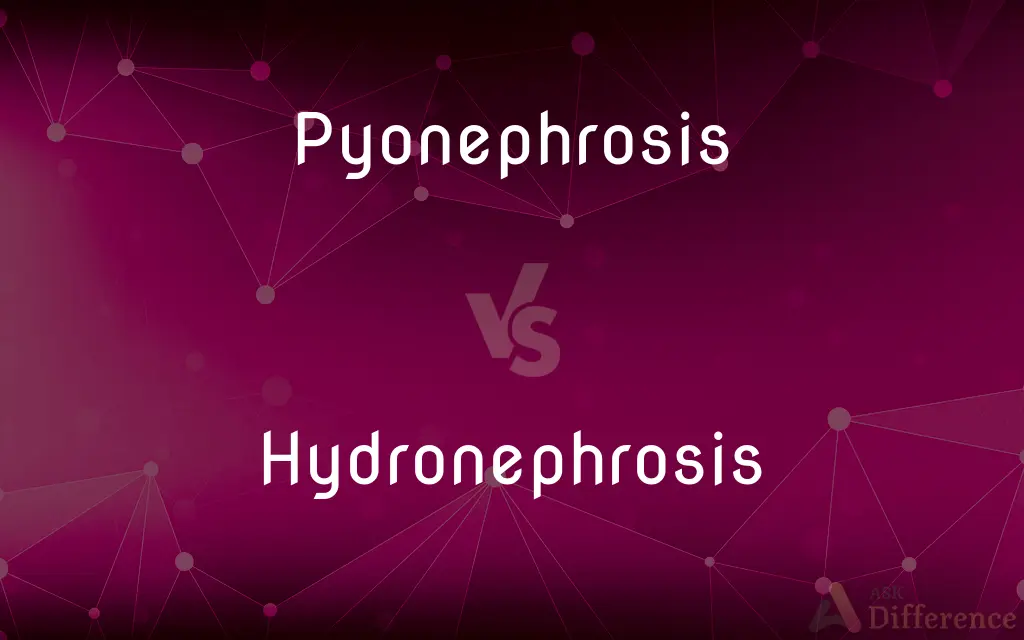Pyonephrosis vs. Hydronephrosis — What's the Difference?

Difference Between Pyonephrosis and Hydronephrosis
ADVERTISEMENT
Compare with Definitions
Pyonephrosis
Pyonephrosis (Greek pyon "pus" + nephros "kidney") is an infection of the kidneys' collecting system. Pus collects in the renal pelvis and causes distension of the kidney.
Hydronephrosis
Hydronephrosis describes hydrostatic dilation of the renal pelvis and calyces as a result of obstruction to urine flow downstream. Alternatively, hydroureter describes the dilation of the ureter, and hydronephroureter describes the dilation of the entire upper urinary tract (both the renal pelvicalyceal system and the ureter).
Pyonephrosis
An infection of the renal collecting system, in which pus collects in the renal pelvis and causes distension of the kidney.
Hydronephrosis
The dilation of the pelvis and calyces of one or both kidneys because of the accumulation of urine resulting from obstruction of urine outflow.
Hydronephrosis
(pathology) distension of the kidneys due to obstruction in the flow of urine
ADVERTISEMENT
Hydronephrosis
An accumulation of urine in the pelvis of the kidney, occasioned by obstruction in the urinary passages.
Hydronephrosis
Accumulation of urine in the kidney because of an obstruction in the ureter
Share Your Discovery

Previous Comparison
Maintain vs. Remain
Next Comparison
Recurrent vs. Transient















































